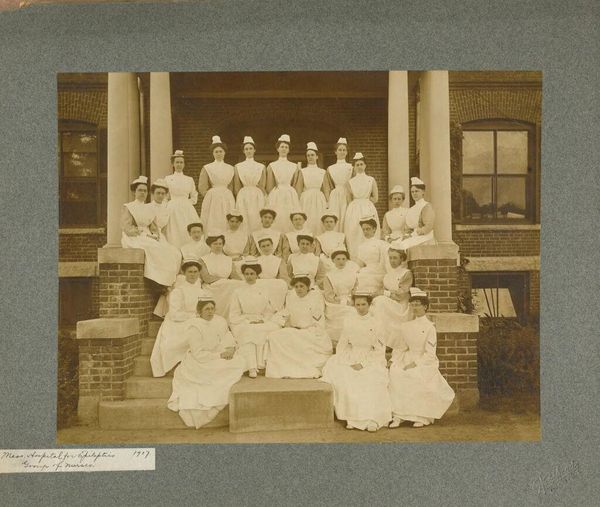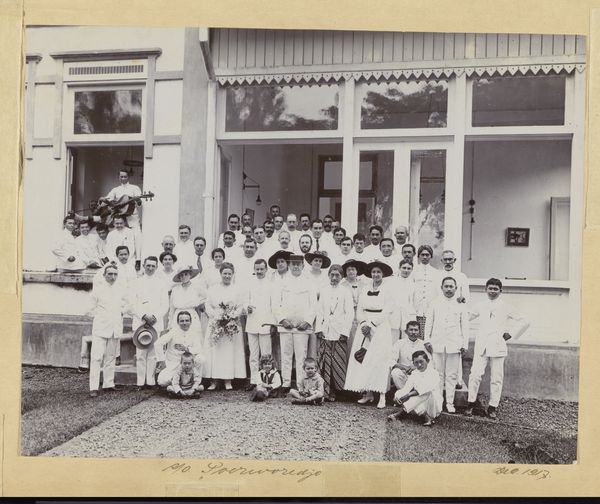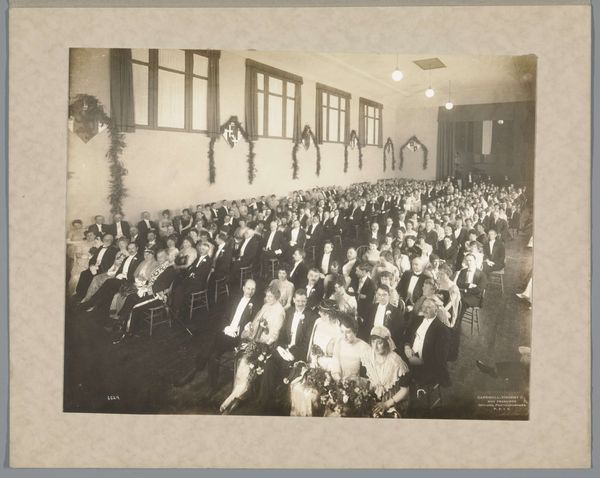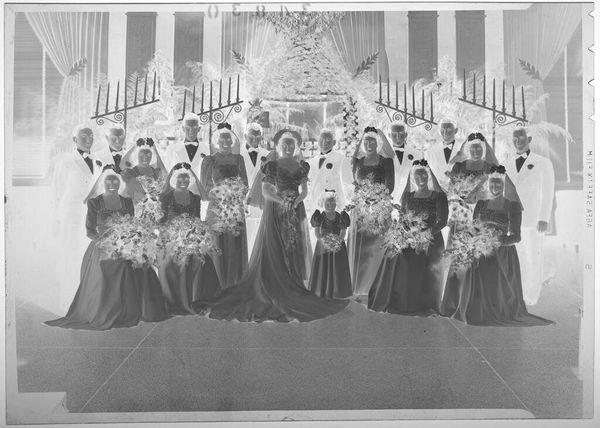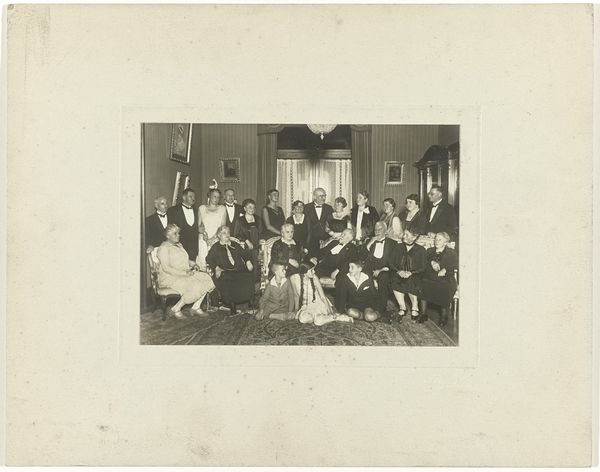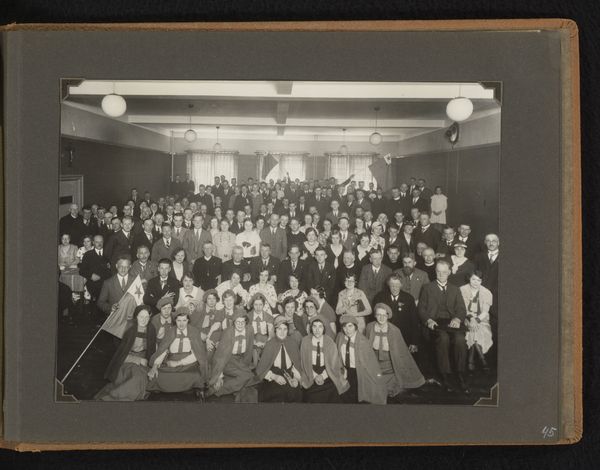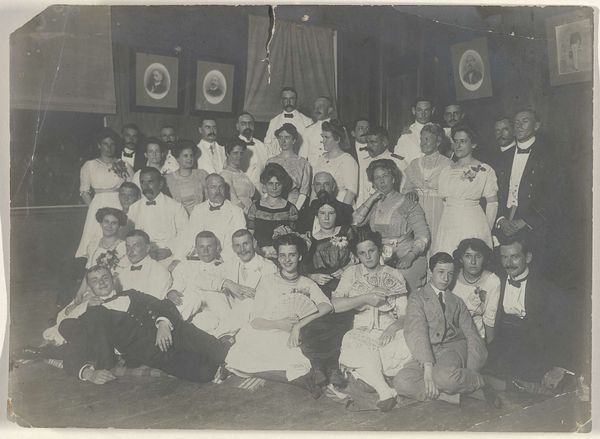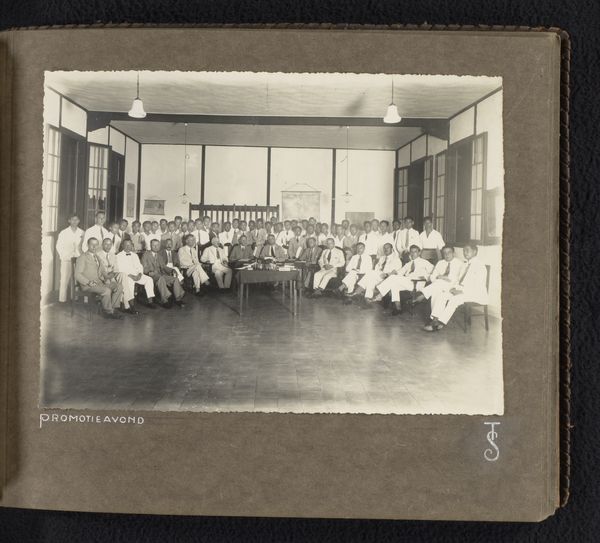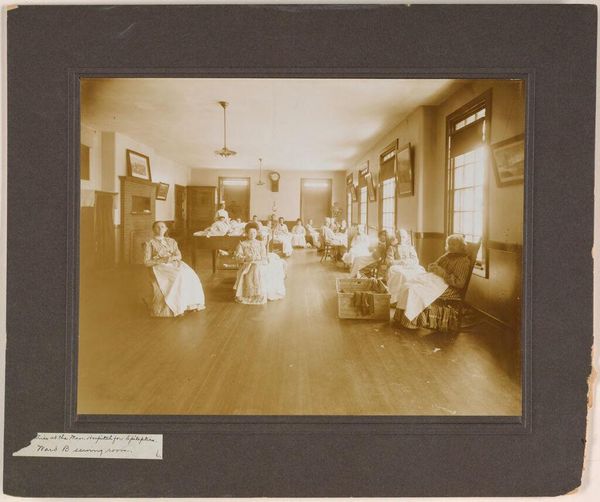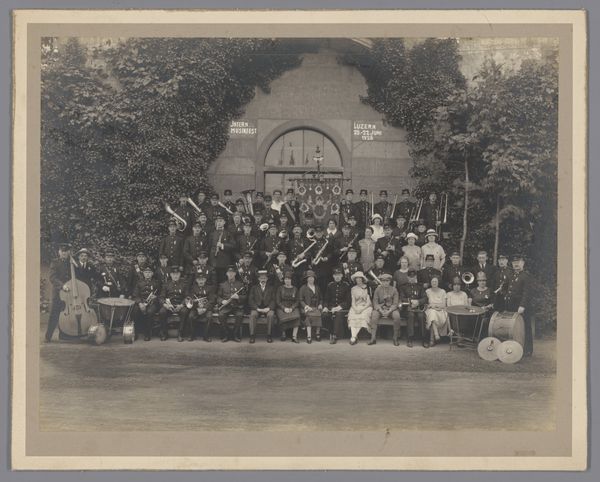
Groepsportret van de Amsterdamsche Vrouwelijke Studenten Vereeniging 1907
Dimensions: height 212 mm, width 284 mm, height 237 mm, width 296 mm
Copyright: Rijks Museum: Open Domain
Editor: So this is "Groepsportret van de Amsterdamsche Vrouwelijke Studenten Vereeniging," taken in 1907. It’s a photograph of a large group of women and it has an interesting sepia tone. What’s your take on this, considering its age and composition? Curator: This photograph is fascinating when we consider its means of production. It’s a historical document, sure, but it's also the product of specific social and material conditions. Look at the sheer number of women gathered. What did it take to organize this? How much did the photography cost at the time, and who paid for it? These considerations move beyond simply viewing it as a portrait, towards understanding its cultural implications. Editor: That’s interesting. I hadn’t thought about the economics behind it. Does the clothing and setting provide additional insights into this being more than just an image? Curator: Absolutely. The dresses, for example – all light-colored and similar in style. What were these garments made from, where were they produced? This represents a collective material experience of the women involved, their social status, and economic means. Their dresses suggest access to specific resources and industries prevalent at the time, influencing their representation. What does it mean to be posing like this, given those clothes? Editor: That sheds new light on the image for me. It really highlights how it's connected to production. Curator: Precisely. Consider the location itself – the architectural style, the furniture, and how these reflect specific cultural values of the time. It goes beyond a simple aesthetic preference; the space symbolizes certain social privileges associated with education and collective association. Even the act of preserving this image becomes meaningful in how its purpose and existence reflect how society at the time regarded women's educational achievements. Editor: So, understanding the materials and how they were created really opens up avenues of interpretation here. Thank you. Curator: My pleasure. Always question how a work of art comes into being and what social dialogues it represents.
Comments
No comments
Be the first to comment and join the conversation on the ultimate creative platform.
